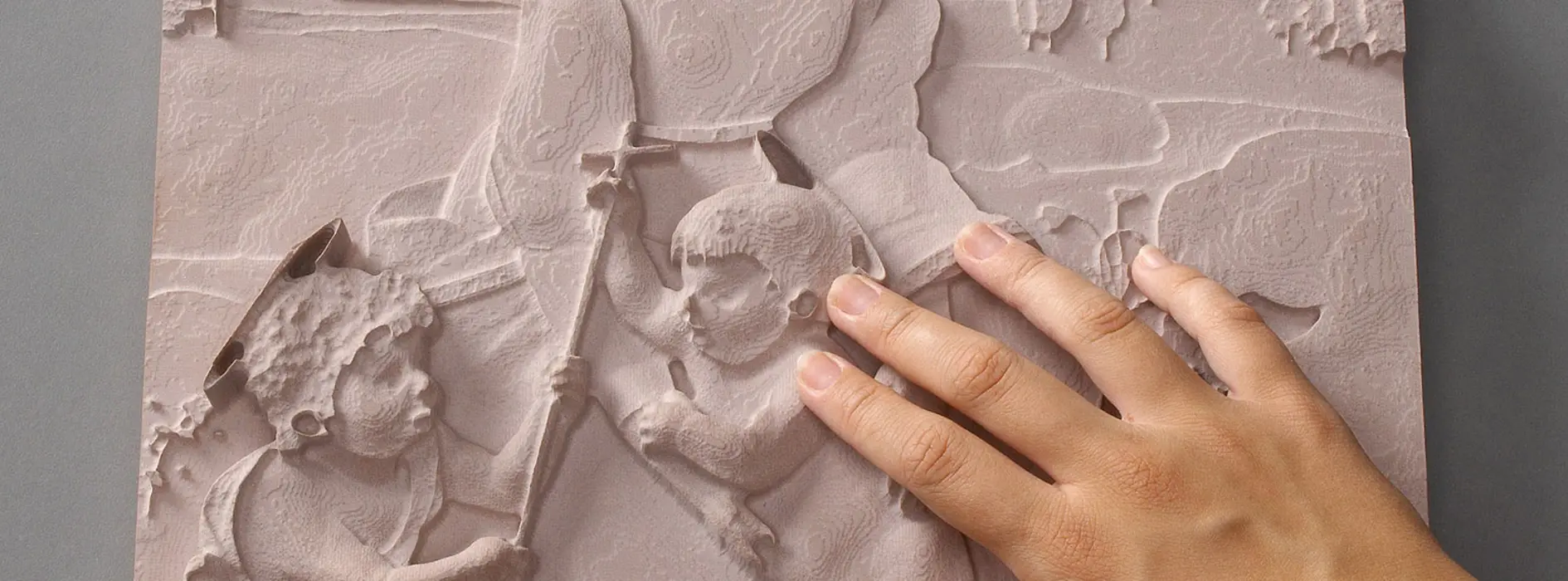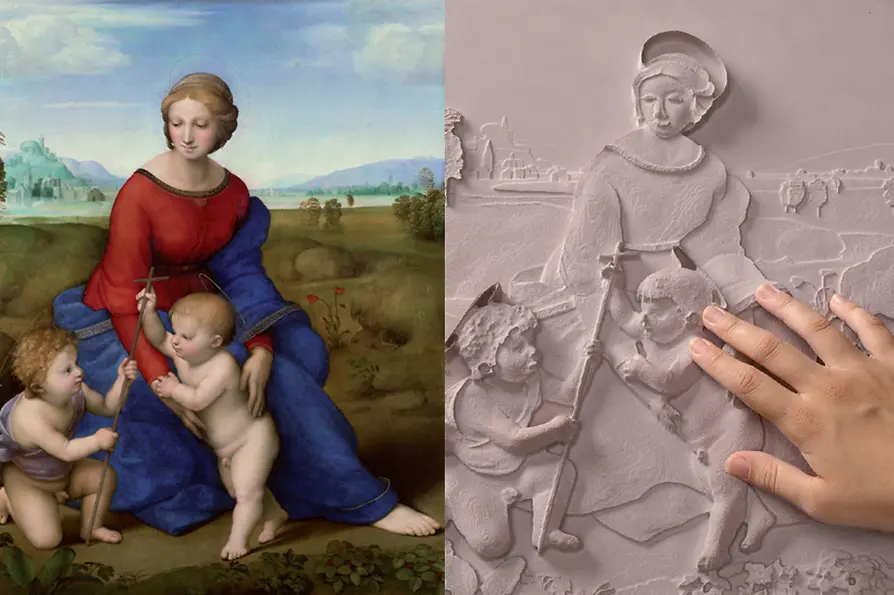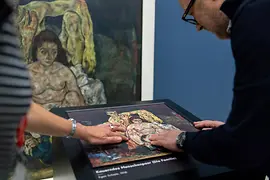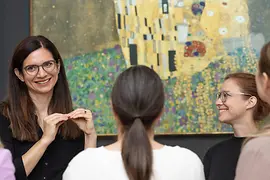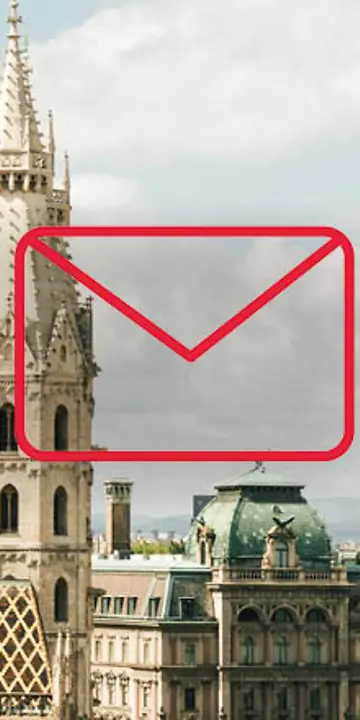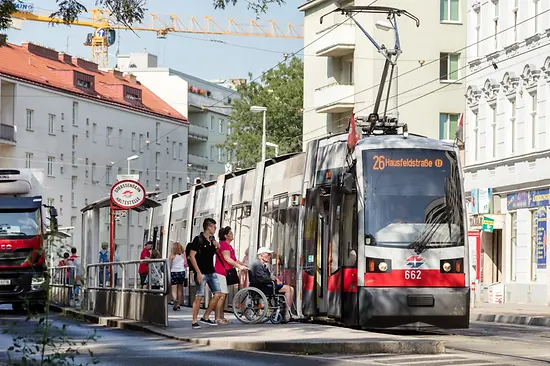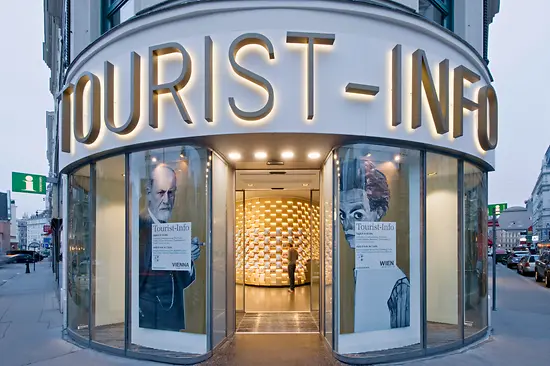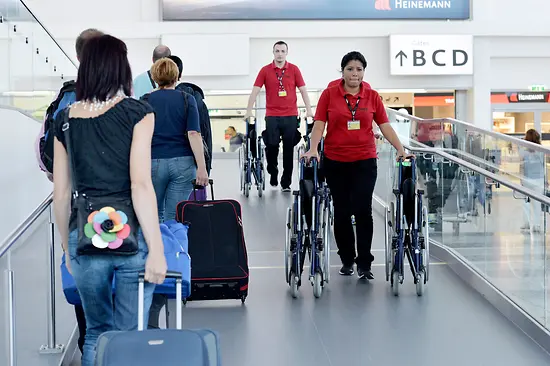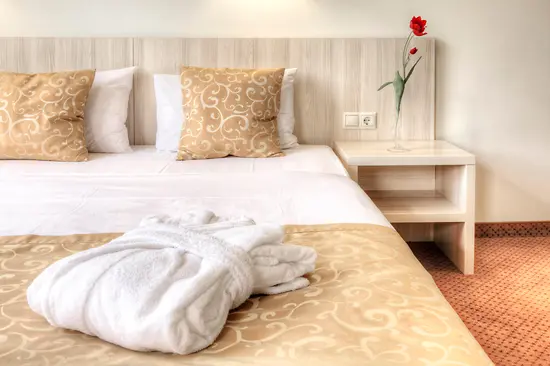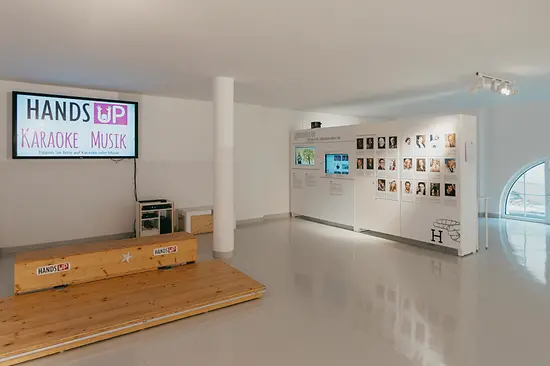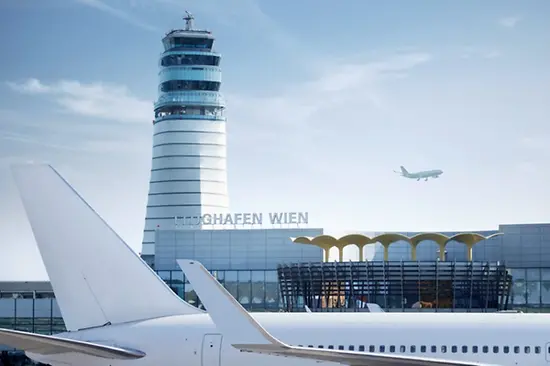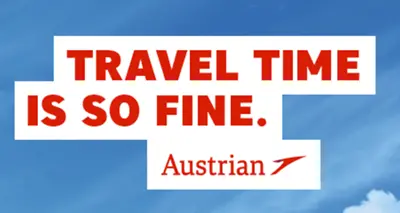Approaching art from a new angle
As far as accessibility and inclusion is concerned, the newly renovated Wien Museum is absolutely cutting-edge. Tactile objects, braille and large print text and information in simple language are used throughout the building and in the exhibitions. Induction loops have been installed and guided tours in sign language and simple language are also available.
The Kunsthistorisches Museum offers a globally unique service for the blind and visually impaired. Three masterpieces of the Renaissance collection belonging to the Picture Gallery at the Academy of Fine Arts have been turned into 3D reliefs for touching. High-resolution photos of Raffael's Madonna in Green, Albrecht Dürer's Madonna and Child, and Jean Fouquet's Gonella the Ferrera Court Jester were the starting point for the milled reliefs which provide an accurate portrayal of the masterpieces' construction and numerous details. A braille brochure and tour guides supply additional information on the pictures. Registration is required for the tactile tours. Further information
The Upper Belvedere organizes special guided tours for blind and visually impaired people. Tactile reproductions of Gustav Klimt’s “The Kiss”, a model of Egon Schiele’s painting “Crouching Human Couple (The Family)” and a bust of Franz Xaver Messerschmidt offer a hands-on art experience. The Belvedere also offers video guides in Austrian and international sign language.
The Roman Museum in the first district is another place where visually impaired visitors are treated to a hands-on experience. The Dom Museum Wien also offers touch tours. The highlight is a relief of Rudolf IV, known as "The Founder".
A 1:2000 scale bronze model of the summer residence of the Habsburgers has been set up at the main entrance to Schönbrunn Palace. This gives visually impaired and blind people the possibility to get a better idea of the size and scale of the palace and the Ehrenhof in front of it. Blind and visually impaired people are also offered special tours, on which visitors can touch selected objects.
Video guides in Austrian Sign Language (ÖGS) and International Sign have been installed in numerous museums in Vienna and can be viewed on special devices or downloaded to your own smartphone. Most of Vienna’s museums also offer guided tours in sign language. Most of Vienna's museums also offer guided tours in sign language on request.
The Museum Guide provides a well-structured overview of the wide range of accessibility and inclusion services available in Viennese and Austrian museums.
- Karlsplatz 8, 1040 Wien
- service@wienmuseum.at
- http://www.wienmuseum.at/
Vienna City Card
Discount valid on special exhibitions
Standard ticket price: 12€ or 8€ (depending on the exhibition) / reduced ticket price: 10€ or 6€
Tickets available online and on site
Buy now with discount:
Prices
- The permanent exhibition is accessible free of charge. Free admission to the special exhibitions on the upper floor for all under 19 and every first Sunday of the month.
Opening times
- Tu, 09:00 - 18:00
- We, 09:00 - 18:00
- Th, 09:00 - 21:00
- Fr, 09:00 - 18:00
- Sa, 10:00 - 18:00
- Su, 10:00 - 18:00
Closed on January 1; May, 1 and December, 25.
Accessibility
no steps
Parking spaces for people with disabilities
Maderstrasse 2 (directly behind the museum) and Resselgasse 2
Seeing eye dogs allowed
Wheelchair accessible restroom available.
Wheelchair for rental, seats available. Guided tours in simple language, Austrian sign language, multi-sensory tours (e.g. touch, smell, hearing, sight) and slow tours.
All areas of the Wien Museum on Karlsplatz are accessible without steps and with a tactile floor guidance system.
Touch stations, overview plans, signposts and door signs are labeled in Braille and in tactile normal writing.
- Maria-Theresien-Platz, 1010 Wien
- info@khm.at
- https://www.khm.at
Vienna City Card
Standard ticket price: 23€ /
Savings: 1 € /
Opening times
- Mo, 10:00 - 18:00
- Tu, 10:00 - 18:00
- We, 10:00 - 18:00
- Th, 10:00 - 21:00
- Fr, 10:00 - 18:00
- Sa, 10:00 - 18:00
- Su, 10:00 - 18:00
Accessibility
5 Steps (Double swinging doors 300 cm wide)
on Maria-Theresien-Platz, no ramp
Barrier-free entrance: Burgring 5 via porter, visitor service accompanies you to the elevator and into the building
5 Parking spaces for people with disabilities
on Heldenplatz
Wheelchair accessible restroom available.
Wheelchair rental possible (please reserve one day in advance). Special tours for visitors with dementia, in easy language, in sign language as well as guided touch tours (Tel. +41 1 525 24-5202 or email: kunstvermittlung@khm.at), Three masterpieces of the Renaissance collection of the painting gallery, selected objects of the Kunstkammer, the Egyptian-Oriental collection and the collection of antiquities are available to the blind and visually impaired as castings for touching. A brochure with image descriptions of this in Braille is available.
Wheelchair users who visit the museum via Burgring 5 can purchase their tickets at the shop in the lobby.
Induction loop available at the audio guide stand.
https://www.khm.at/en/learn/art-education/inclusive-art-education/
- Prinz-Eugen-Straße 27, 1030 Wien
- info@belvedere.at
- https://www.belvedere.at
Comments
Please note: If visiting the Upper Belvedere, you must make a free reservation for a time slot for group travelers (from 10 people). https://www.belvedere.at/en/tourism-b2b
Monday to Sunday, 9.00 am - 6.00 pm
Email: booking@belvedere.at
Telephone: +43 1 795 57-333
Vienna City Card
- 1,50€ on the current entry ticket price (Upper Belvedere)
- 2,50€ on the current entry ticket price / 2in1 ticket (Upper and Lower Belvedere)
Buy now with discount:
Opening times
- daily, 09:00 - 18:00
Accessibility
no steps (Swinging doors 102 cm wide)
Parking spaces for people with disabilities
Parking space for visitors with disabilities in front of the entrance at Prinz-Eugen-Strasse 27, Parking: 10 am – 6 pm
Seeing eye dogs allowed
Wheelchair accessible restroom available.
Reduced admission for people with disabilities and assistants. "See differently" guided tours (tactile tours) in the Upper Belvedere for blind and visually impaired visitors. Video guides in Austrian Sign Language (OGS) and International Sign are available for deaf visitors.
2 elevators reachable via a ramp (staff will provide assistance), wheelchairs available at the cloakroom.
Shop/café: a few steps (staff will provide assistance).
Additional information about your accessible visit can be found at:
https://www.belvedere.at/en/your-visit/inclusion-museum
- Hoher Markt 3, 1010 Wien
- https://www.wienmuseum.at/roemermuseum
Vienna City Card
Standard ticket price: 8€ / reduced ticket price: 6€
Available at the onlineshop, on site and at ticket.viennacitycard.at
Buy now with discount:
Prices
- 1st Sunday of the month: Free admission
Opening times
- Tu - Su, 09:00 - 17:00
- Sa - Su, 10:00 - 17:00
December 24 and December 31: 10:00 a.m. to 2:00 p.m.
Closed: January 1, May 1 and December 25
Accessibility
no steps
Wheelchair accessible restroom available.
Wheelchair rental available, Hands-on objects for partially-sighted visitors. Multimedia guide in sign language available. Guided tours through the permanent exhibition for blind and partially-sighted are available by prior arrangement (Tel. +43 1 505 87 47–85 180).
Main entrance and shop area: no steps. Rear exhibition area only accessible via 8 steps, excavations below street level Exhibition area on the first floor accessible by use of a stair-climbing device.
- Stephansplatz 6, 1010 Wien
- info@dommuseum.at
- https://dommuseum.at
Vienna City Card
Standard ticket price: 10€ / Reduced ticket price: 8€ Available at site or online: https://dommuseum.at/tickets_en#!/e/4f3f4f951c49a962e7dbe0ea65b3f37a
Buy now with discount:
Opening times
- Mo - Su, 10:00 - 18:00
- Th, 10:00 - 20:00
Accessibility
no steps (Door 154 cm wide)
wheelchair-accessible motorized revolving door
Seeing eye dogs allowed
The “Dom Museum Wien” app (free download) with detailed descriptions of the permanent exhibition can be used in talk-back or voice-over mode for blind and visually impaired people. The language selection also includes Austrian Sign Language (ÖGS). Portrait of Rudolf IV and a section of his precious grave cover have been turned into relief presentations with aid of computers and make ideal touching objects. Accompanying booklets “Simply explained”, designed in large print, are available for free. Inclusive art education programs are aimed at people with different biographical backgrounds and combine art experience with creative activity in the cathedral studio. The workshop series “So Close to the Center” was developed in cooperation with day centers that care for people with dementia. It evokes memories, discovers newness in art and combines both with the here and now.
You can also find additional information on accessibility at: https://dommuseum.at/accessibility
Access to the exhibition rooms on the first floor by elevator.
- Schönbrunner Schlossstraße, 1130 Wien
- info@schoenbrunn.at
- http://www.schoenbrunn.at
Vienna City Card
Sisi Pass (November 3, 2025 to March 26, 2026): €51.00 instead of €57.00
Classic Pass Plus: €71.00 instead of €76.00
Classic Pass (April 1 to November 2, 2025): €38.00 instead of €40.00
Tickets on www.imperialtickets.com and on site
Buy now with discount:
Opening times
- (Last entry: 16:15 h) daily, 08:30 - 17:00
- (Last entry: 16:45 h) daily, 08:30 - 17:30
- (Last entry: 16:15 h) daily, 08:30 - 17:00
Accessibility
no steps
Parking spaces for people with disabilities
at main entrance portal (Schönbrunner Schlossstrasse, 3 parking spaces), Meidlinger Tor (2 parking spaces), close to Kavalierstrakt as well as Valerietrakt (2 parking spaces) and Fürstenstöckl (1 parking space)
Seeing eye dogs allowed
Wheelchair accessible restroom available.
Free wheelchair rental – contact attendant at main portal (3 wheelchairs) or at Hietzinger Tor and at Meidlinger Tor (1 wheelchair each). Supplemental devices available for the visually impaired. Tours for visitors with with disabilities or special needs on request. Museum Sign Language Guide available in ÖGS and IS for the Imperial or Grand Tour, prior reservation recommended, further information: https://www.schoenbrunn.at/en/visitor-information/barrier-free-access
Access to all exhibition rooms: no steps. Freight elevator for extra wide wheelchairs: door width: 160 cm, cabin depth: 220 cm, cabin width: 156 cm.
Ticket Center in the Gardetrakt by the main gate, stepless access, door width: approx. 144 cm, wheelchair-accessible restroom can be reached by wheelchair platform lift – platform 110/140 cm, door width: 90 cm in the corridor area and 94 cm to the outdoors, accessible from outside with a Euro-Key.
